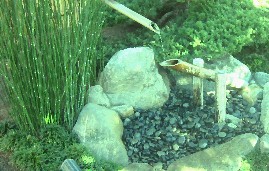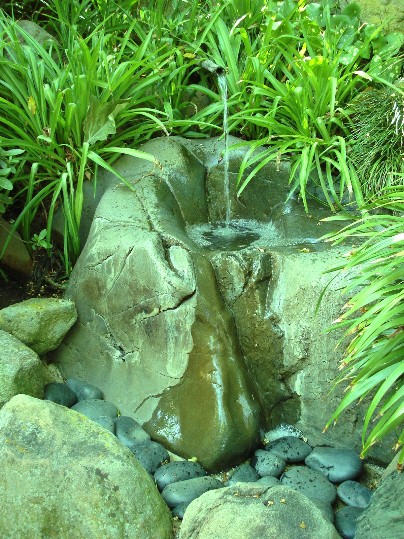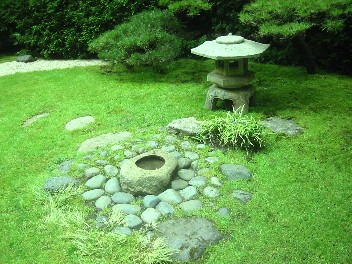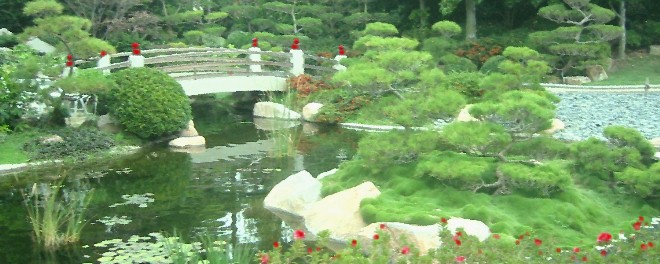Zen Landscaping

Celebrating Natural States


G A R D E N H I S T O R Y

Zen gardens offer a mystical retreat into quiet refinement. Entering the
gates creates opportunities leaving all one's concerns behind, relaxed
while worries simply vanish. The meandering paths offer impressionistic
treasures that propel gliding tranquil expressions. The Far East garden
mood provides natural order of heaven and earth, balanced by elements
"Yin & Yang". An ordinary person can have an extraordinary
experience discovering groundedness and reassurance.

The
first Zen gardens were believed to be orchestrated by Shinto's. Even
though Shintoism was not a written order, its ways was through living
art of landscape. Shinto's approach to landscape became an universal
expression to warmly inviting outsiders. The garden space of stillness
calms the mind so it can open the imagination and liberally free oneself
no matter anyone's orientation.


A
garden theme purpose promotes vitalizing of one's being and reminds
living in immortality. In fact, Shinto's viewed all things as living,
therefore include every material aspect in staging detail. Shinto's
expressions were designed to promote deep contemplation for vitally to
rise an ethereal like experience. This elusory experience of protruding
rocks were believed to pulsate a masculine "CHI" to feel "Qi" (known as
vital breath), acquiring spirit of Zen. The spotted rocks represent an
ancient folklore "Sacred String of Islands" that brings immortality and
longevity. The symbol of the classic red arched bridge fuses gaps within
the crossing seas of islands. This "cross-over" theme within islands
was believed to string a unifying awareness of transitioning separate
worlds.

It was not until later around 6th century that Zen landscaping begin
evolving for the purpose of enhancing worship. Zen priests use the fluid
medium of dry landscape,, "Karesanui", to better enhance their ways of
being. These Zen gardens transform easy into meditation for practicing
monks. At nights, they would move the candle lit lanterns from the
temples into the gardens so to appreciate evening open skies. As an
semi-outdoor meeting hall, a Tea Room was staged with a waiting bench
for the purpose of spiritual ceremonies in the garden.

Whether
for spiritual or art, today the classic expressions of these gardens
allows everyone to appreciate the impressions these environments served,
echoed through timeless years.

D E S I G N M E T H O D S
There are no methods or rules to garden planning other than trusting
intuitive spirit of meditation with design. If it feels great, then it
promotes the vital source to balance of well-being. Creating comfort as a
restorative theme is easily accomplished through means of backdrops.
These scenery's optimally frees the spirit as it allows one to drop all
negativity and disturbance so contemplation is grounded in presence.
Simplistically, as far as choosing design elements, what you leave out
is more important than what you leave in. Letting go of classic European
gardening rules or any other hindered references will eventually free
the mind and allow clean-slated reference in design. The goal is to
provide an honest theme of palatable materials conducive to the
surrounding. These include materials that are mostly indigenous in type.
Plant material can authentically be chosen based on climate of area,
aware with environmental aspects and honoring limited water resources
where applicable.

Landscaping may quietly be ornamented with accessories that splash and
punctuate garden zenergy. Using concrete lanterns, arched bridges,
stupas, bamboo ladles, and forged metal bells personalize space to
contribute with the theme. Even indigenous rocks can be sculptured by
leaving impressionistic chisel marks delivered by the human hand.
Calligraphic carvings and chiseled stone monuments offer crude groupings
thta complementary mix modern with ancient contemporary art forms.
Through time, letting all landscape accessories weather naturally and
developed green moss carpet offers a soft velvet-like feel.

Fencing
materials can be tethered bamboo pieces of different assortments of
flats and rounds that can bring implied boundaries, lines and textures
of interest.

At
smaller spaces, adjusting fence heights with false accentuated
vanishing points at opposite corners give gardens a sense of larger
space while natural carved hedge liners become a lower profile to frame
space without making it closed or forbidden.

Water basins, ponds and streams add tranquility and purity by both sound
and visual form. Having a fishpond adds to the ecosystem while drawing
visual attention. Taking account with gravity, water cascading from top
shelves offers different sound variations from an aggressive sheet flow
down to a subtle trickle. Such acoustic design variations can be
manipulated as water drop sounds range from babbling, splash, gargling,
pattering, etc.,, Where water is not possible, dry waterfall, dry river
and dry ponds can be sculptured into a static softscape, then sound
added by an obscured speaker system. Other sources that emulate water
dynamics are wind chimes or selecting trees which leaves glitter to
brisk of winds. Even playing with the shade and light beams through
canopy of trees generate feel of flickering water as the dappled
impressions of dark to light dance in contrast within settings of Yin
and Yang. Using rain gutters and rain chains to cascade into stone
troughs also add seasonal tranquil sounds.

Plant elements can offer a spirit all their own. The subtle and simple
palette of planting materials can give gardens micro illusion that bloom
into the macro world naturally all through exercising scale. The
trimming of soft sensuous masses of bushes could offer a cloud like
feel. Perhaps on less dense shrubbery, the exposed base limbs can be
trimmed emulating a miniature forest so to create depth and distance
backdrop for composition. Conerfours trees have dignity aura with their
pointed needles reaching the ground to sky. These trees reverend
longevity, endured through time as believed in surviving thousands of
years. As in "Bonsai" tying bamboo splines to small bushes exhilarate
time of an old weathered contorted coniferous tree, assimilating
expressions of surviving heavy gusted winds. Also, accenting with bamboo
shoots may mask unwanted visual surroundings from neighboring yards

Deeper redefining
to John's true definition to articulate his work in action, see bellows links:
Feng Shui
<FengShui Link>
National TV Interview
<YouTube Link>
Unique Design Components
<WabiSabi-Link>







 Whether
for spiritual or art, today the classic expressions of these gardens
allows everyone to appreciate the impressions these environments served,
echoed through timeless years.
Whether
for spiritual or art, today the classic expressions of these gardens
allows everyone to appreciate the impressions these environments served,
echoed through timeless years. At
smaller spaces, adjusting fence heights with false accentuated
vanishing points at opposite corners give gardens a sense of larger
space while natural carved hedge liners become a lower profile to frame
space without making it closed or forbidden.
At
smaller spaces, adjusting fence heights with false accentuated
vanishing points at opposite corners give gardens a sense of larger
space while natural carved hedge liners become a lower profile to frame
space without making it closed or forbidden.
